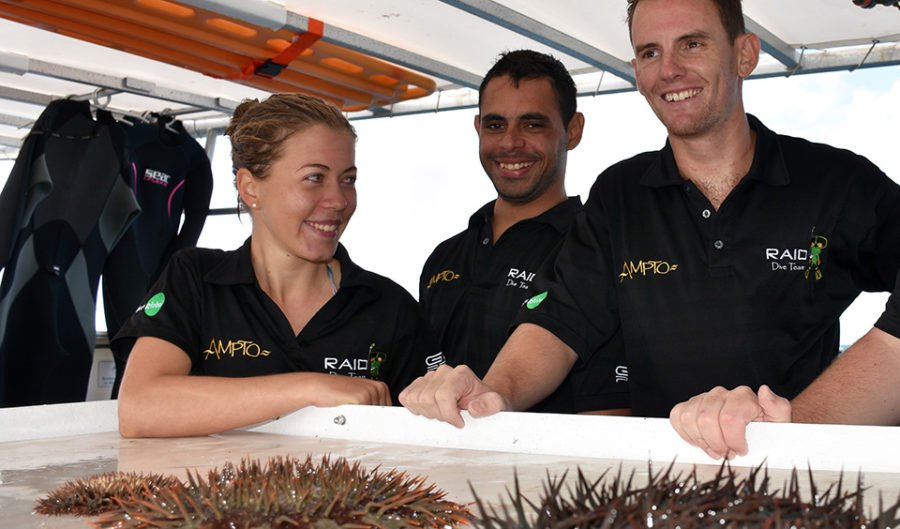Innovative program helps reef and unemployed

UNEMPLOYMENT IS THE biggest challenge faced by young Australians living in regional areas. The desire to work can be strong, but, as often is the case, it’s difficult to find full time employment without relocating to the capital cities.
According to recent statistics, the city of Cairns has a youth unemployment rate of around 20 per cent, over three times higher than the national average. To combat this social issue, and protect the fragile Great Barrier Reef marine environment in the process, one company has chosen to take matters into their own hands.
The Crown of Thorns Starfish Control Program, a government-funded project, is the result of a partnership between the peak industry body, Association of Marine Park Tourism Operators (AMPTO), and private marine consultancy firm Gempearl.
This program is taking long-term unemployed youth and training them to cull the environmental pest known as the crown of thorns starfish (COTS).
Innovative way to solve the crown of thorns problem
Cairns locals Col and Margie McKenzie created the program as a way of funding their mission to control the COTS population on the reef. These native sea creatures are responsible for 47 per cent of the coral loss on the reef over the last 27 years.
In the same way that plagues of locusts can devastate crops, COTS can consume vast areas of living coral when numbers are high. Adult starfish are capable of producing in excess of 60 million offspring per breeding season. To help restore balance, AMPTO are actively culling these pests on the reef.
From 200 applications received, just 12 candidates are selected for the program. Tarquin Singleton and Bonnie Martin, two of the program’s most recent trainee recruits, have undergone a fast-tracked dive training course, taking them from non-divers to experienced and qualified dive instructors in just six months.
Program teaches more than reef protection
Trainees are taught to kill the crown of thorns at the same time as learning essential skills required to gain employment in the tourism industry. As part of the training, they spend at least two weeks working with local operators. Through mentoring, recruits learn to cook, clean, and keep house – life skills many of them have never had in the past.
Tarquin, a 24-year-old from the Yirrganydji Aboriginal people, traditional custodians of the land between Cairns and Port Douglas, described the program as challenging but also one of the most rewarding experiences he’s had.
“It’s a steep learning curve, but it needs to be”, he said. “You learn more than just diving. You learn how to skipper, to give marine talks; it builds your confidence.”
At 18 years of age, Bonnie is one of the youngest trainees in the program.
“I’d grown up around the reef and always wanted to give back to it in some way,” she said. “This program has been a fantastic opportunity to do that, and also gain qualifications at the same time. It’s a challenge, but it’s good to push yourself.”
Crown of thorns program a success
So far the program has successfully trained more than 120 youths, with a success rate over 85 per cent achieving full-time employment. While the majority have found work in the tourism industry, many recruits have also chosen to further their education.
Mathew Trueman, 22, who completed the traineeship and went on to work aboard various dive boats four years ago, recently returned to as a full-time team member.
“The skills I picked up gave me a solid foundation to work from, but the COTS program lured me back,” he said. “I view what we’re doing as protecting the reef for the future, and it’s great to know I’m doing my bit to help protect it.”
In the past three years the program has culled in excess of 370,000 starfish.
The ultimate goal of the program is to secure funding for multiple vessels on the reef, two acting as reactionary vessels to kill COTS spotted around the main tourism dive sites, and one to proactively seek out new aggregations throughout the reef.
For more information, visit gempearl.com.au

